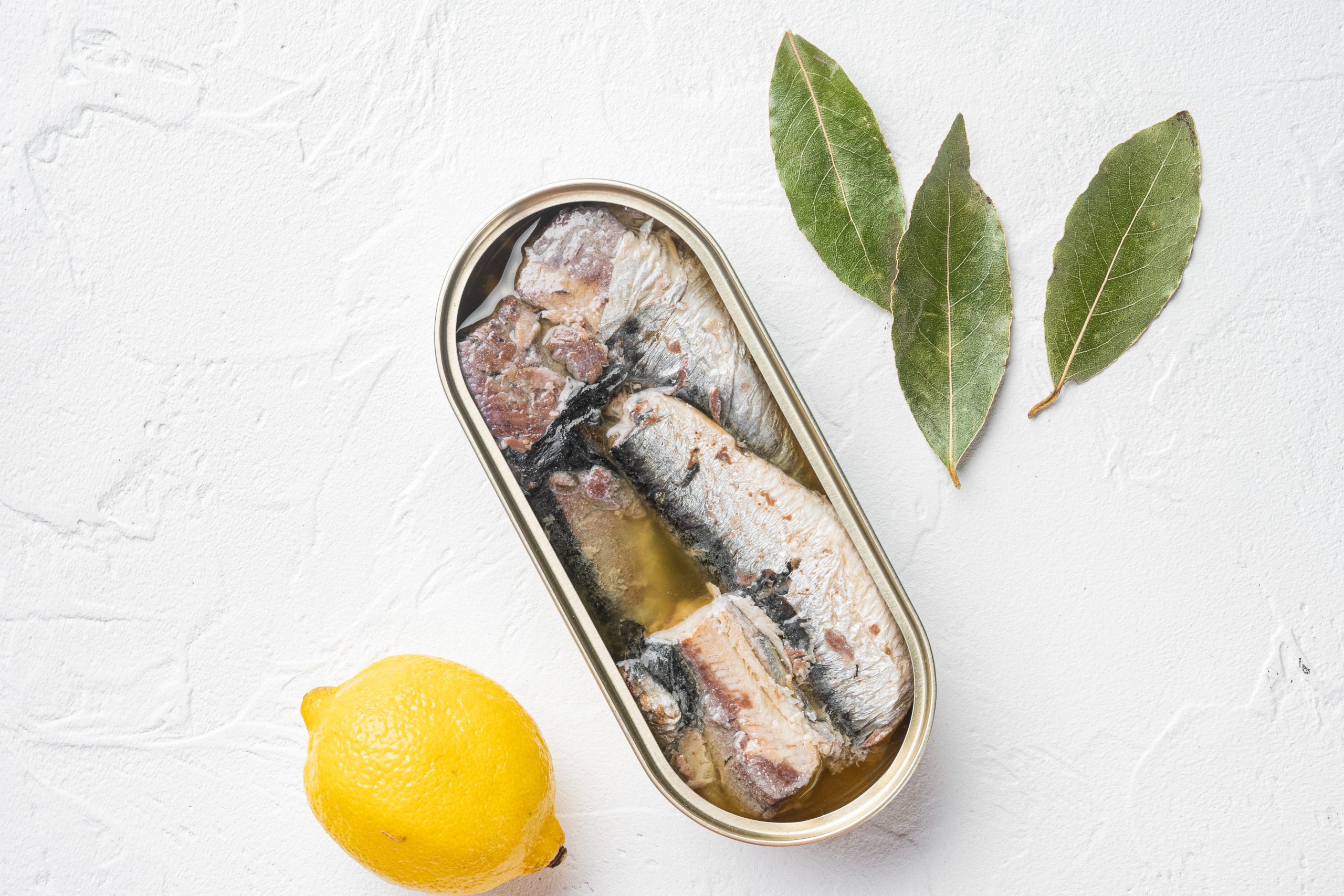Picture this: you’re strolling through the aisles of your local grocery store, and amidst the rows of fresh seafood, you spot a stack of tins filled with fish. You may wonder, why on earth would anyone choose tinned fish over its fresh counterpart? Well, the answer might surprise you. It turns out that there’s more to tinned fish than meets the eye. In fact, people have been devouring this preserved delicacy for centuries, and it’s not just for the sake of nostalgia or convenience. So, if you’re intrigued to uncover the secrets behind the enduring allure of tinned fish, keep reading.
History and Tradition
Tinned fish has a rich history and is deeply rooted in European traditions, making it more than just a convenient food option. Its origins can be traced back centuries, particularly in Spain and Portugal, where it has been a staple in their diets. Tinned fish holds great cultural significance, as it represents a preservation method that allowed communities to have access to fish even during times of scarcity. The preservation methods used in tinning fish, such as canning in oils and spices, not only extend its shelf life but also enhance its flavor. Traditional recipes for tinned fish vary across different regions, reflecting the unique culinary traditions of each place. From sardines in Portugal to anchovies in Spain, each country has its own regional variations that contribute to the diversity and richness of tinned fish. Today, tinned fish continues to be celebrated and enjoyed, both for its historical significance and for the delicious and versatile ingredients it provides for a wide range of dishes.
Nutritional Benefits
Building on the rich history and tradition of tinned fish, it is important to explore the nutritional benefits that this preserved delicacy offers. Here are four key reasons why tinned fish is a healthy choice for your diet:
- Health Benefits: Tinned fish is packed with numerous health benefits. It is a rich source of lean protein, which is essential for muscle growth and repair. Additionally, tinned fish, such as salmon and sardines, are high in omega-3 fatty acids. These fatty acids have been shown to reduce the risk of heart disease and improve overall cardiovascular health.
- Omega-3 Fatty Acids: Tinned fish, particularly oily varieties like sardines and salmon, are abundant in omega-3 fatty acids. These essential fatty acids are crucial for brain health, reducing inflammation, and supporting healthy skin. Incorporating tinned fish into your diet can help you meet your recommended intake of omega-3s.
- Lean Protein: Tinned fish is an excellent source of lean protein. It provides the necessary amino acids for building and repairing tissues in your body. Including tinned fish in your meals can help you maintain a healthy weight, build strong muscles, and support overall bodily functions.
- Heart Disease Prevention: Consuming fish rich in omega-3 fatty acids, like tinned sardines and tuna, has been associated with a reduced risk of heart disease. These fatty acids can lower blood pressure, reduce triglyceride levels, and improve blood vessel function. By regularly incorporating tinned fish into your diet, you can promote heart health and decrease the likelihood of cardiovascular issues.
Convenience and Portability
When considering the convenience and portability of tinned fish, it becomes evident that this preserved delicacy offers a practical and easy-to-use option for meals on the go. Tinned fish provides a range of benefits that make it an excellent choice for those who are looking for a quick and nutritious meal option. Let’s explore some of the key advantages of tinned fish:
| Benefits of Tinned Fish | Cooking Tips |
|---|---|
| Highly portable source | – Use tinned fish in |
| of protein. | salads, sandwiches, |
| and pasta dishes. | |
| Oilier varieties like | – Pair tinned fish |
| sardines and salmon | with crusty |
| are rich in omega-3 | bread or crackers |
| fatty acids. | for a satisfying |
| meal on the go. | |
| Tinned fish, such as | – Explore different |
| salmon and sardines, | flavor combinations |
| are among the highest | by trying different |
| sources of omega-3s | types of tinned |
| in grocery stores. | fish. |
| Offers a sustainable | – Incorporate tinned |
| choice by using | fish into various |
| smaller fish lower on | dishes for added |
| the food chain. | flavor and nutrition |
| Does not require | – Follow favorite |
| refrigeration, | tinned fish recipes |
| reducing energy | to create delicious |
| consumption and | meals. |
| minimizing food waste. |
In addition to these benefits, tinned fish also offers various health benefits. It is a rich source of lean protein and omega-3 fatty acids, which can reduce the risk of heart disease. Tinned fish is lower in saturated fat and provides essential nutrients like vitamin D and iodine. Incorporating tinned fish into your diet can contribute to a healthy eating pattern.
For those looking for quick and easy meal options, tinned fish can be enjoyed straight from the can or paired with other ingredients to create delicious dishes. Whether you’re adding it to a salad, sandwich, or pasta, tinned fish adds both protein and flavor to your meal. So next time you’re on the go and in need of a convenient and nutritious option, don’t forget to grab a can of tinned fish.
Sustainability and Environmental Impact
With its numerous benefits and convenience for on-the-go meals, it’s important to also consider the sustainability and environmental impact of tinned fish. When choosing tinned fish, it is crucial to prioritize sustainable fishing practices to ensure the long-term health of our oceans. Here are four key points to consider:
- Sustainable fishing practices: Look for tinned fish brands that prioritize sustainable fishing methods, such as using selective fishing gear and avoiding overfished species. This helps maintain the balance of marine ecosystems and ensures the availability of fish for future generations.
- Ocean conservation: By opting for tinned fish sourced from well-managed fisheries, you contribute to the conservation of our oceans. Sustainable fishing practices help protect vulnerable species, minimize bycatch, and preserve the overall health of marine ecosystems.
- Reducing food waste: Tinned fish offers a solution to reducing food waste. It does not require refrigeration and has a longer shelf life than fresh fish, reducing the chances of it going to waste. By consuming tinned fish, you play a part in minimizing food waste and its associated environmental impact.
- Eco-friendly packaging: Choose tinned fish products that come in eco-friendly packaging. Look for brands that use recyclable materials or prioritize sustainable packaging practices. This helps reduce waste and lessen the environmental burden of packaging materials.
Considering the sustainability and environmental impact of tinned fish allows us to make conscious choices that support responsible fishing practices, protect marine ecosystems, reduce food waste, and opt for eco-friendly packaging. By being mindful of these factors, we can enjoy the convenience of tinned fish while minimizing our impact on the environment.
Culinary Versatility
The culinary versatility of tinned fish makes it a valuable ingredient in a wide range of dishes and recipes. Whether you’re a seasoned chef or a home cook looking to experiment, tinned fish offers countless possibilities for culinary creativity. From simple preparations to complex dishes, there are endless cooking techniques to explore.
Tinned fish can be used in a variety of flavor combinations to enhance the taste of your dishes. Pair it with tangy citrus fruits for a refreshing ceviche, or combine it with creamy avocado for a rich and satisfying salad. The umami flavor of tinned fish also pairs well with ingredients like tomatoes, olives, and capers, adding depth and complexity to pasta sauces or Mediterranean-inspired dishes.
Recipe inspiration for tinned fish can be found in various cuisines around the world. From Spanish tapas to Asian stir-fries, the possibilities are endless. Try making fish cakes with tinned salmon, or incorporate tinned sardines into a flavorful pasta sauce. The versatility of tinned fish allows you to experiment with different flavors and textures to create unique and delicious meals.
When it comes to pairing suggestions, tinned fish can be enjoyed in a variety of ways. Spread it on crusty bread for a quick and satisfying snack, or use it as a topping for pizzas and flatbreads. Tinned fish can also be added to salads, rice bowls, and sandwiches for an extra protein boost. The options are only limited by your imagination.
Popularity and Trending
Tinned fish has experienced a surge in popularity and is currently trending in the culinary world. Here are four reasons why tinned fish is capturing the attention of consumers:
- TikTok influence: Social media platforms like TikTok have played a significant role in popularizing tinned fish. The trend of tinned fish-themed date nights, showcased by couples on TikTok, has grabbed the attention of millions of viewers and sparked curiosity about this preserved delicacy.
- Social media impact: The influence of social media extends beyond TikTok. Platforms such as Instagram and YouTube feature mouthwatering images and videos of tinned fish dishes, enticing health-conscious consumers to explore this convenient and nutritious option.
- Health-conscious consumers: With an increasing focus on health and wellness, consumers are seeking nutritious food choices. Tinned fish offers a rich source of lean protein and omega-3 fatty acids, which are beneficial for heart health. This aligns with the preferences of health-conscious individuals who prioritize nutrient-dense foods.
- Cultural influences: Tinned fish has a long-standing tradition in European countries like Spain and Portugal. The cultural influences of these regions have spread to other parts of the world, contributing to the growing popularity of tinned fish as a gourmet and indulgent food.
These factors, combined with consumer preferences for convenience, sustainability, and unique culinary experiences, have propelled tinned fish into the spotlight and made it a trending choice in the culinary world.
Branding and Market Competition
After exploring the popularity and trends surrounding tinned fish, it is important to examine the branding strategies and market competition within this culinary phenomenon. The tinned fish market has witnessed significant growth in recent years, leading to the emergence of new brands and increased competition. These market trends have been driven by consumer preferences for convenience, sustainability, and quality. To stand out in the market, brands have focused on innovative packaging designs that not only preserve the fish but also create a visual appeal. The use of intricate illustrations and striking designs on tinned fish wrappers adds to their beauty and collectibility. Opening a can of fish now offers the thrill of discovering what’s inside and has a sense of occasion and anticipation.
Brands like Ortiz, Zallo, Olasagasti, La Narval, and Pinhais are competing for market share in the tinned fish industry. Ortiz, a popular brand, has established its presence on delicatessen shelves across the UK. However, new players have entered the market, offering consumers more options and variety. Companies like The Tinned Fish Market have recognized the importance of an aspirational aesthetic in their branding strategies, providing simplicity and convenience in their products.
Pricing strategies also play a crucial role in the market competition. While some high-end restaurants sell tinned fish dishes at exorbitant prices, most tins of fish are reasonably priced, making them accessible to a wide range of consumers. Despite the range of pricing options available, tinned fish has long been an essential source of protein for students and low-income families.
Accessibility and Affordability
To ensure that tinned fish remains an accessible and affordable option for consumers, various pricing strategies have been implemented by brands in the market competition. Here are four ways in which tinned fish brands are making their products more accessible and affordable:
- Cost effective protein: Tinned fish provides a cost-effective source of protein, making it an attractive option for individuals on a budget. With prices ranging around £5 for most tins, it offers a wallet-friendly alternative to fresh seafood.
- Budget friendly seafood: Tinned fish is considered a budget-friendly seafood option, allowing consumers to enjoy the nutritional benefits of fish without breaking the bank. It provides an economical choice for those looking to incorporate seafood into their diet without spending a fortune.
- Affordable fish option: Tinned fish is known for its affordability, making it a viable choice for individuals and families looking to stretch their food budget. It offers a way to enjoy fish without compromising on taste or quality.
- Accessibility and price: The availability of tinned fish in various supermarkets and grocery stores ensures its accessibility to a wide range of consumers. Its affordable price point makes it accessible to individuals from different socio-economic backgrounds, providing economic advantages for those seeking a cost-effective protein source.
These pricing strategies contribute to the popularity and widespread consumption of tinned fish, ensuring that it remains an accessible and affordable option for individuals looking for a convenient and budget-friendly seafood choice.


